Fine Art for Interior Design

With his exquisite photography, Cecil Beaton carved out a stellar career in fashion and Hollywood in the 1920s and 1930s. As a couture photographer at Vogue and Vanity Fair, he posed models against expressionist artwork, oversized bouquets, and mirrored staircases. His breathtaking portraits of Hollywood stars such as Greta Garbo, Marlene Dietrich, Johnny Weissmuller, and European artists including Salvador Dali and Pablo Picasso fostered Beaton’s success on both sides of the Atlantic. After mastering photography, Beaton began designing lavish costumes for opera, theatre, and film. For his craftsmanship in costume design, he won four Tony Awards and two Academy Awards (Gigi in 1958 and My Fair Lady in 1964). A member of London’s bohemian aristocrats known as the Bright Young Things, Cecil Beaton developed his own personal sense of style. Above, we see a portrait of Beaton in his lavish home bathroom with countless hand signatures of friends and celebrities and wearing a custom jacket by Lanz of Salzburg.
With his exquisite photography, Cecil Beaton carved out a stellar career in fashion and Hollywood in the 1920s and 1930s. As a couture photographer at Vogue and Vanity Fair, he posed models against... Read More
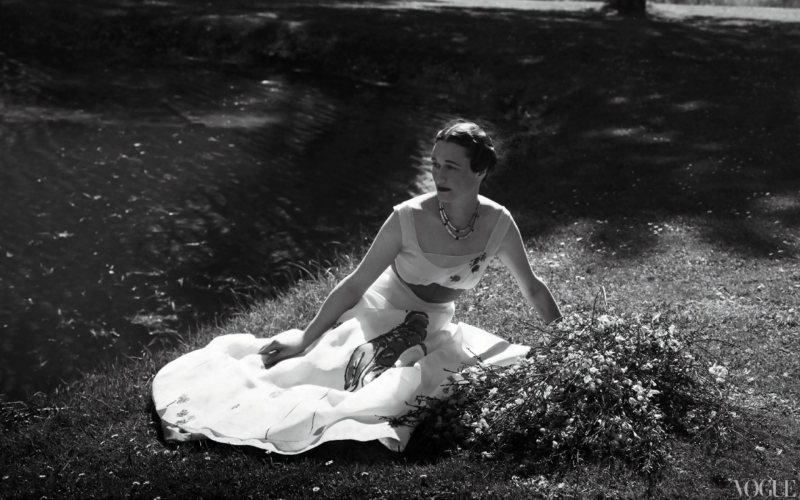
At the end of the 1930s, when the Royal Family sought to soften their image, they called upon the renowned photographer Cecil Beaton. Public perception of the British Crown had declined after King Edward VIII scandalously abdicated to marry American socialite and divorcee Wallis Simpson. When the future Duke and Duchess of Windsor married at the Château de Candé in France in 1937, the multi-talented Beaton was on hand to photograph the wedding and the days leading up to it. Here, he captures Wallis Simpson reclining in the grass in a white Elsa Schiaparelli couture dress with a lobster pattern created by Salvador Dali. Beaton frames the sharp angles of Simpson’s face and the accents of her dark, bold lipstick, then bathes it all in a gentle halo of light. These ethereal images appeared in Vogue magazine and impressed the Queen, who had boycotted the wedding with the rest of the Royal family.
At the end of the 1930s, when the Royal Family sought to soften their image, they called upon the renowned photographer Cecil Beaton. Public perception of the British Crown had declined after King... Read More
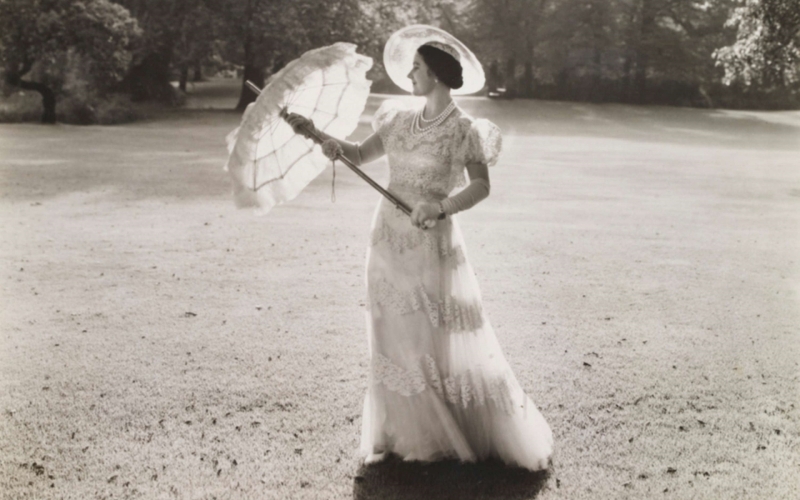
Cecil Beaton was summoned to the palace two years later to snap palace portraits that would reshape the nation's view of the aristocracy. When he headed to Buckingham Palace in 1939, Beaton aimed to avoid stiffly posing the Queen (later known as the Queen Mother), as was typical for that time period. Beaton hoped for an airier, less stuffy look that would illuminate his subject's peaches-and-cream complexion and dazzling smile. He elected to photograph the Queen in the gardens of Buckingham Palace, with the lightness of her ruffled dress and flouncy bonnet complemented by the natural beauty around her. A master of composition, Beaton illuminated his subject by coupling bright light in the foreground with hazy soft trees in the background. The Queen's open parasol radiates grace and beauty, and the pictures helped shift the public's view of the Royal House of Windsor.
Cecil Beaton was summoned to the palace two years later to snap palace portraits that would reshape the nation's view of the aristocracy. When he headed to Buckingham Palace in 1939, Beaton aimed to... Read More
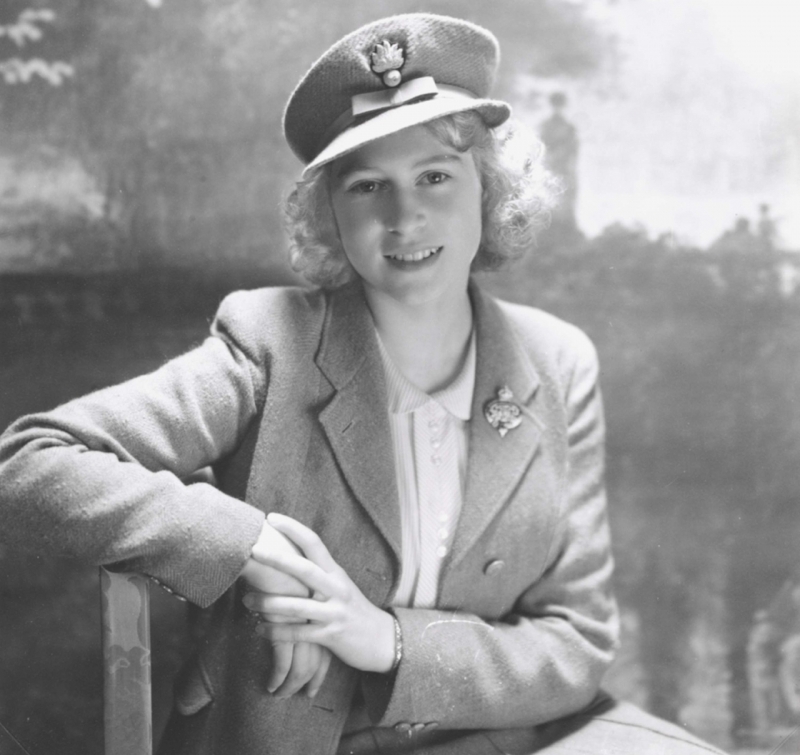
When Cecil Beaton secured his spot as a favorite court photographer of the Royal House of Windsor, it was in part because of the rapport he had established with the Queen Mother. His first photographs of Princess Elizabeth (the future Queen Elizabeth II) were recorded in 1942, with World War II underway. Beaton often included decorative elements with his subjects, and the cap perched upon the 16-year-old Princess’ head juxtaposed with the hazy, impressionistic landscape are consistent with the photographer’s artistic preferences. In fact, Princess Elizabeth’s father had named her a Colonel, so she wore the Grenadier Guards cap and lapel pin during part of the photoshoot. The fresh-faced expression, soft curls, and gentle posture of the Princess give the effect of angelic softness. Beaton deftly blended light and shadow to capture her charm and sweet smile.
When Cecil Beaton secured his spot as a favorite court photographer of the Royal House of Windsor, it was in part because of the rapport he had established with the Queen Mother. His first... Read More
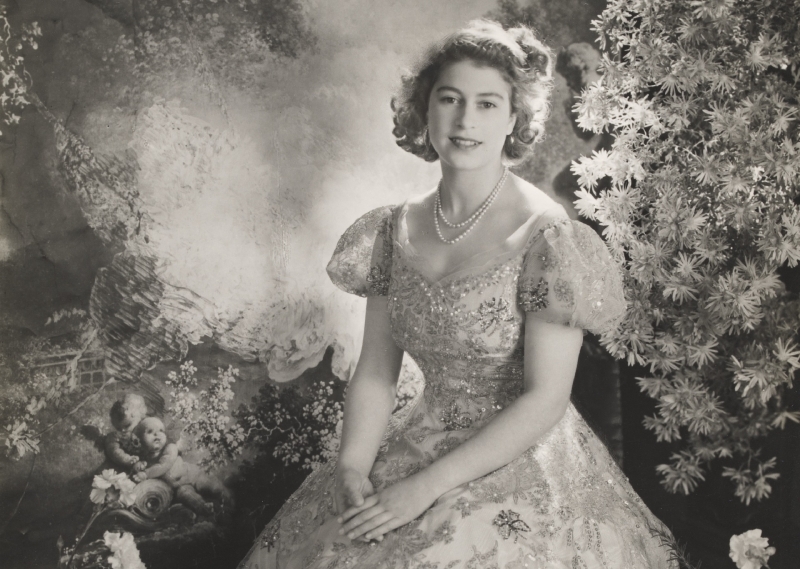
Princess Elizabeth sat for many Beaton portraits, including this 1945 picture. The angle of her face and the background cherubs looking up at her indicate wholeness and innocence. The beading of her dress is offset by a large flower bouquet, and Beaton's interplay of light and joyful composition foreshadow the peace and prosperity that followed the end of the war. Beaton later recorded the pageantry of the 1953 coronation of Her Royal Highness Queen Elizabeth II in black ink sketches, then photographed her in regal elegance at Westminster Abbey for her official portrait. From the 1930s to the 1960s, Beaton photographed the Royal Family, taking tender pictures of Prince Charles and his siblings, shifting from rococo backgrounds to stark white or blue backdrops. Beaton was renowned for his ability to endow a mundane subject with a glamorous sheen. His illuminating portraits have been showcased in books and museums, including the National Portrait Gallery and the Victoria and Albert Museum in London. He was awarded the 1957 Commander of the British Empire (for his services to design and photography) and was knighted in 1972.
Princess Elizabeth sat for many Beaton portraits, including this 1945 picture. The angle of her face and the background cherubs looking up at her indicate wholeness and innocence. The beading of her... Read More
Watch Video: Cecil Beaton and his Amazing Legacy with the Royal Family
Watch Video: Cecil Beaton and his Amazing Legacy with the Royal Family
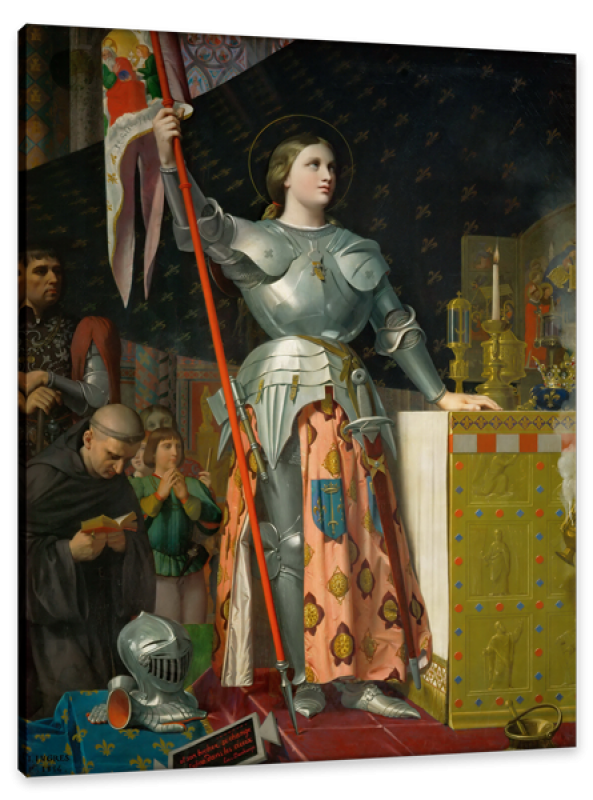
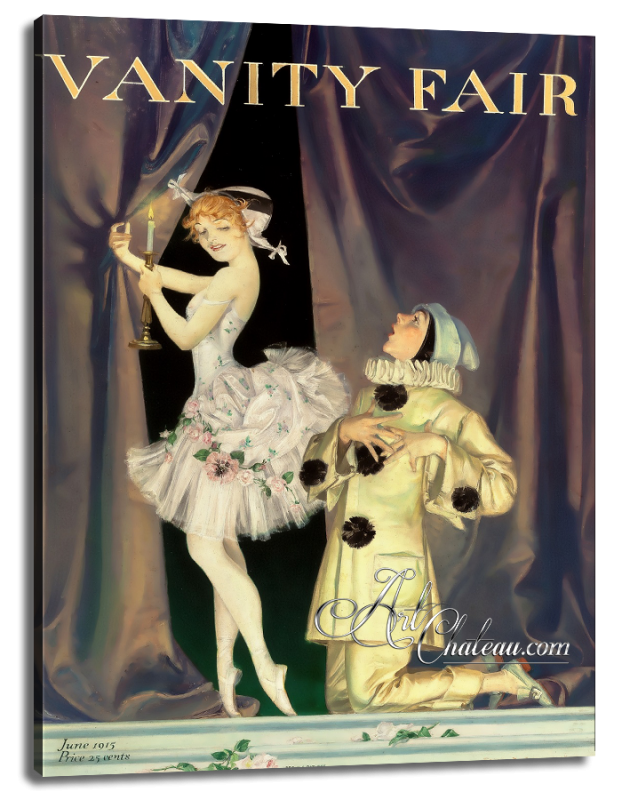
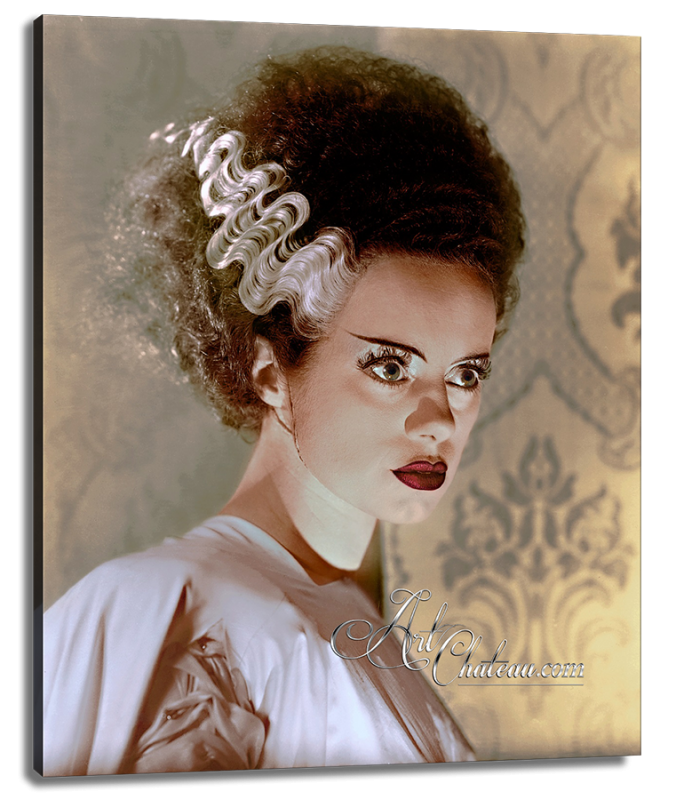
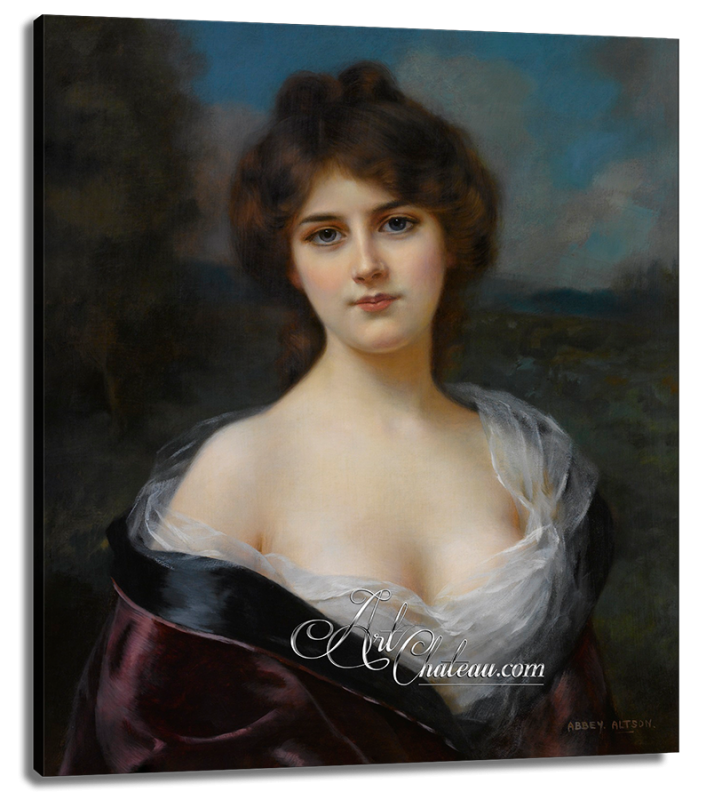
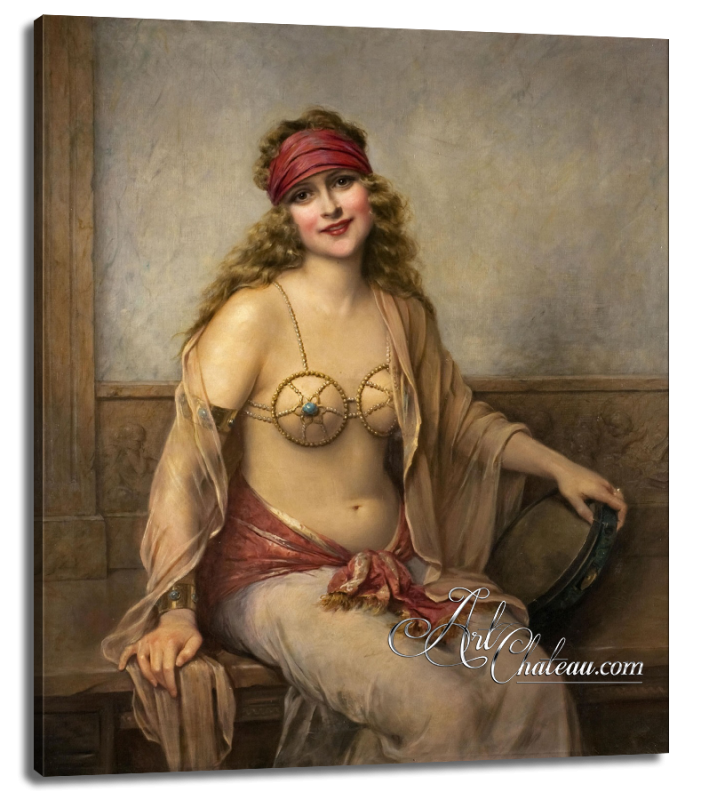
The St. Regis Bora Bora Resort is a luxury hotel in the heart of French Polynesia. Surrounded by a...
Italian master chef, Fulvio Pierangelini's Tuscan Bistro, is located in the Hotel Savoy and firmly...
With its unparalleled views, exceptional amenities, and exquisite style, the Blenheim House at One...
There’s a reason the iconic American Bar at the five-star Savoy in London was recently awarded...
Cecil Beaton and his Amazing Legacy with...By: Sarah Louise Klose / Photographs Courtesy of the Beaton Estate |

|
|
With his exquisite photography, Cecil Beaton carved out a stellar career in fashion and Hollywood in the 1920s and 1930s. As a couture photographer at Vogue and Vanity Fair, he posed models against expressionist artwork, oversized bouquets, and mirrored staircases. His breathtaking portraits of Hollywood stars such as Greta Garbo, Marlene Dietrich, Johnny Weissmuller, and European artists including Salvador Dali and Pablo Picasso fostered Beaton’s success on both sides of the Atlantic. After mastering photography, Beaton began designing lavish costumes for opera, theatre, and film. For his craftsmanship in costume design, he won four Tony Awards and two Academy Awards (Gigi in 1958 and My Fair Lady in 1964). A member of London’s bohemian aristocrats known as the Bright Young Things, Cecil Beaton developed his own personal sense of style. Above, we see a portrait of Beaton in his lavish home bathroom with countless hand signatures of friends and celebrities and wearing a custom jacket by Lanz of Salzburg. |

|
|
At the end of the 1930s, when the Royal Family sought to soften their image, they called upon the renowned photographer Cecil Beaton. Public perception of the British Crown had declined after King Edward VIII scandalously abdicated to marry American socialite and divorcee Wallis Simpson. When the future Duke and Duchess of Windsor married at the Château de Candé in France in 1937, the multi-talented Beaton was on hand to photograph the wedding and the days leading up to it. Here, he captures Wallis Simpson reclining in the grass in a white Elsa Schiaparelli couture dress with a lobster pattern created by Salvador Dali. Beaton frames the sharp angles of Simpson’s face and the accents of her dark, bold lipstick, then bathes it all in a gentle halo of light. These ethereal images appeared in Vogue magazine and impressed the Queen, who had boycotted the wedding with the rest of the Royal family. |

|
|
Cecil Beaton was summoned to the palace two years later to snap palace portraits that would reshape the nation's view of the aristocracy. When he headed to Buckingham Palace in 1939, Beaton aimed to avoid stiffly posing the Queen (later known as the Queen Mother), as was typical for that time period. Beaton hoped for an airier, less stuffy look that would illuminate his subject's peaches-and-cream complexion and dazzling smile. He elected to photograph the Queen in the gardens of Buckingham Palace, with the lightness of her ruffled dress and flouncy bonnet complemented by the natural beauty around her. A master of composition, Beaton illuminated his subject by coupling bright light in the foreground with hazy soft trees in the background. The Queen's open parasol radiates grace and beauty, and the pictures helped shift the public's view of the Royal House of Windsor. |

|
|
When Cecil Beaton secured his spot as a favorite court photographer of the Royal House of Windsor, it was in part because of the rapport he had established with the Queen Mother. His first photographs of Princess Elizabeth (the future Queen Elizabeth II) were recorded in 1942, with World War II underway. Beaton often included decorative elements with his subjects, and the cap perched upon the 16-year-old Princess’ head juxtaposed with the hazy, impressionistic landscape are consistent with the photographer’s artistic preferences. In fact, Princess Elizabeth’s father had named her a Colonel, so she wore the Grenadier Guards cap and lapel pin during part of the photoshoot. The fresh-faced expression, soft curls, and gentle posture of the Princess give the effect of angelic softness. Beaton deftly blended light and shadow to capture her charm and sweet smile. |

|
|
Princess Elizabeth sat for many Beaton portraits, including this 1945 picture. The angle of her face and the background cherubs looking up at her indicate wholeness and innocence. The beading of her dress is offset by a large flower bouquet, and Beaton\'s interplay of light and joyful composition foreshadow the peace and prosperity that followed the end of the war. Beaton later recorded the pageantry of the 1953 coronation of Her Royal Highness Queen Elizabeth II in black ink sketches, then photographed her in regal elegance at Westminster Abbey for her official portrait. From the 1930s to the 1960s, Beaton photographed the Royal Family, taking tender pictures of Prince Charles and his siblings, shifting from rococo backgrounds to stark white or blue backdrops. Beaton was renowned for his ability to endow a mundane subject with a glamorous sheen. His illuminating portraits have been showcased in books and museums, including the National Portrait Gallery and the Victoria and Albert Museum in London. He was awarded the 1957 Commander of the British Empire (for his services to design and photography) and was knighted in 1972. |

|
|
Watch Video: Cecil Beaton and his Amazing Legacy with the Royal Family |